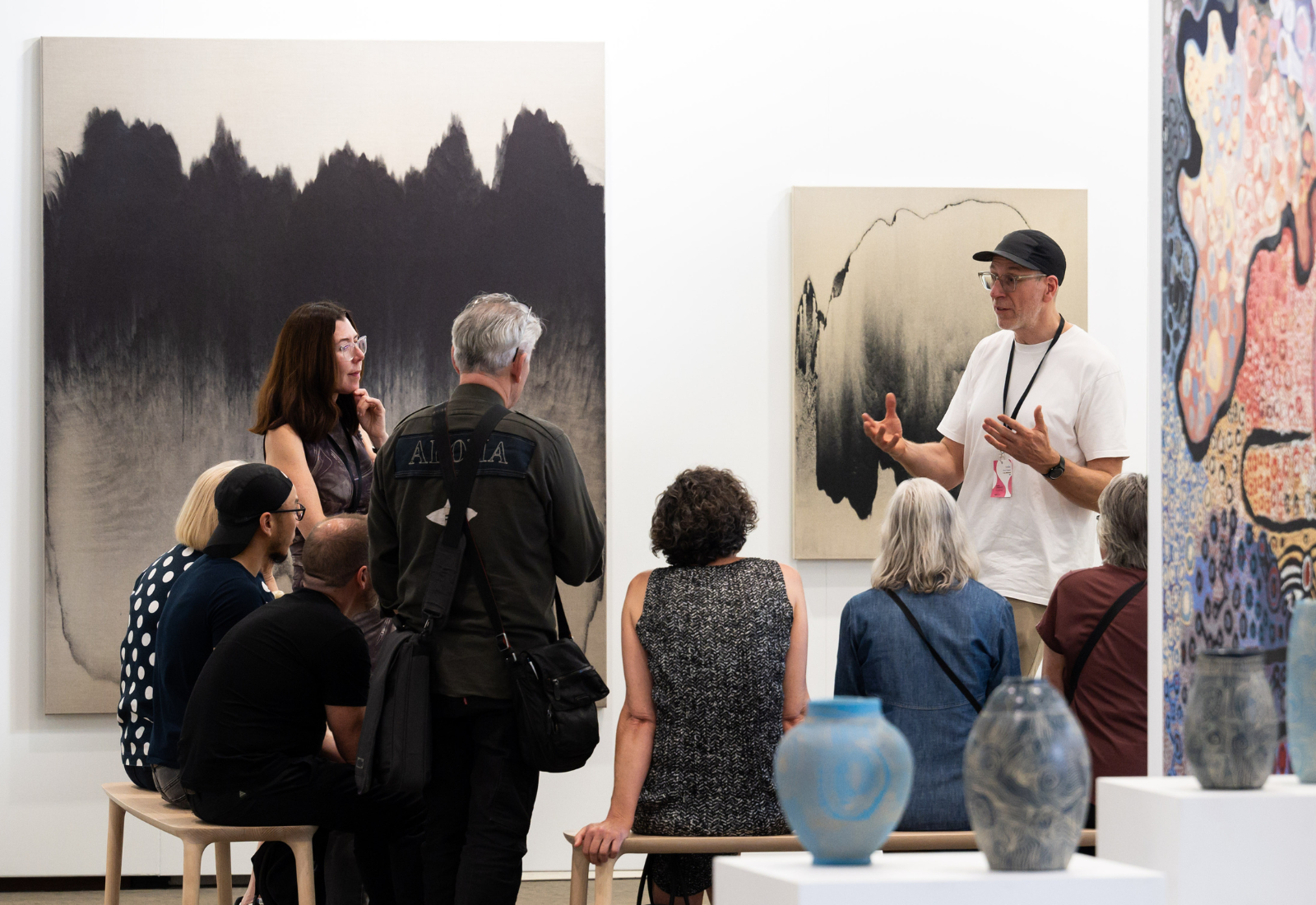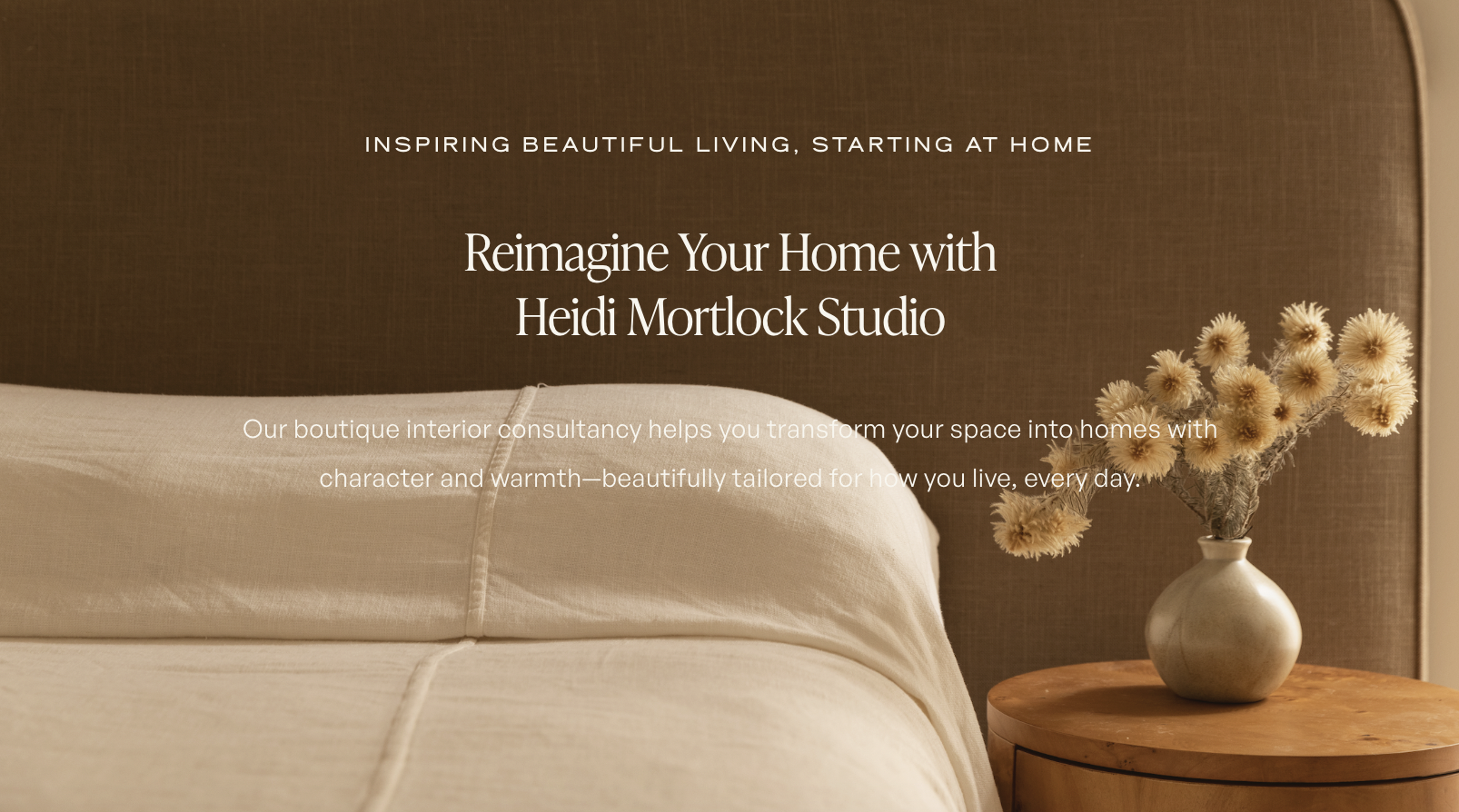Sydney Contemporary’s Zoe Paulsen on the Art of Collecting & Why It’s Key to a Unique Home
With a career dedicated to championing art in all its forms, Zoe Paulsen is a passionate advocate for bringing art into the home—not just as decoration, but as a way to infuse character, meaning, and personal storytelling into a space. In this interview, she shares why art is the ultimate way to make a house feel uniquely yours and offers expert tips for starting your art collection with confidence.
Zoe Paulsen understands the transformative power of art. As the Fair Director of Sydney Contemporary, Australasia’s premier art fair, a board member at Artspace, and a committee member of MCA Next, she’s deeply embedded in the arts community, connecting people with the artists, galleries, and opportunities that inspire and elevate.
Tell us about your background and how you came to be the Fair Director at Sydney Contemporary?
My career has unfolded somewhat by chance, but each step has deepened my knowledge of the art world.
I think it all started with the Museum of Contemporary Art, where I joined The Young Ambassadors (now MCA Next) and have been a committee member for over a decade. The big turning point came in 2014 when I attended The Other Art Fair in London. Recognising its potential for Sydney, I helped launch the local edition the following year.
From there, I became Festival Director of Can’t Do Tomorrow, co-founded The Incognito Art Show, and worked with the Affordable Art Fair—all while becoming a mum to two sons. In 2022, while pregnant with my second, I was put forward for the role of Fair Director at Sydney Contemporary. The timing wasn’t ideal(!), but I couldn’t pass it up. Almost two years in, I couldn’t imagine doing anything else.
“When it comes to art, trust your gut, start with what you love, and know your budget. If you are new to the art world, start by going to gallery openings. Talk to others who are interested and passionate about buying and collecting – find out about how they began their journey. Ultimately, don’t be afraid to ask questions. Stay curious, open-minded, and most importantly, have fun with the process!”, says Zoe.I often find myself explaining to clients that art isn’t just something that hangs on walls—that it can take many forms, from sculpture and textiles to functional pieces like ceramics or even lighting. can you speak to this?
I love that you're emphasising the broader scope of what art can be! It's a great point because the traditional idea of art being something that “hangs on the wall” really limits its potential.
In my view, art is anything that is created with intention, emotion, and creativity, designed to express or communicate something meaningful—whether that’s beauty, function, a story, or an idea. It doesn’t have to fit into a specific box; it can be something you experience visually, tactilely, or even interact with. It’s about the impact it has on the senses or the mind, rather than just a particular medium.
There are so many functional objects that are also works of art. Think about ceramics, furniture, or lighting. A beautiful, sculptural work can be both a functional source of furniture and a striking visual piece. There’s a great exhibition showing at Gallery Sally Dan Cuthbert ‘Exceptional Art and Design’ which speaks to this perfectly.
Why do you believe art is an essential element in the home?
Art is key to making a home feel personal and unique because it reflects your individual taste, personality, and experiences. It goes beyond just filling a space—it adds depth, colour, texture, and meaning, transforming it from just a physical structure into a place that tells a story. The right piece can evoke emotions, set the tone, and spark conversation, making the space feel uniquely yours.
What are some misconceptions people have about collecting art, especially when it comes to affordability or fitting art into everyday homes?
A lot of people have misconceptions about collecting art. One common myth is that you need to be an expert, but that’s not true. While collectors often become knowledgeable over time, most didn’t start as experts—they had a passion and curiosity. The key is to be open to learning, and the process will lead to expertise.
Another misconception is that art is only for the wealthy, but there are plenty of affordable options–especially from emerging artists, prints, and smaller works. Local galleries, online platforms, and even art fairs, like Sydney Contemporary, offer reasonably priced pieces. And when it comes to fitting art into your home, it’s more flexible than people think. Art can elevate any space, whether it’s a formal living room or a cosy nook, and you don’t always need to match it to your furniture—let it be an unexpected reflection of your personality.
How can someone learn more about the stories behind the art they love, and why is this storytelling aspect important for building a collection?
Understanding the context, the artist’s journey, and the intention behind the work is so important. To learn more about the art you love, start by reading artist statements, bios, and interviews, and explore exhibition catalogues or online resources. Visiting galleries, attending artist talks, and asking questions provide great insights. Personally, meeting artists directly has the biggest impact.
If direct access feels out of reach, consider joining programs like the MCA’s Next program, which offers behind-the-scenes access, studio visits, and connections with like-minded people. I’ve been part of that program for over ten years, and it’s been an incredible source of inspiration and friendships. I’ve also recently been appointed to the board of Artspace, a leading institution for the production and presentation of contemporary art in the Asia Pacific – their free public programs stimulate discussion, critical thinking and knowledge sharing through presentations by artists, curators and leading thinkers. Understanding the intention behind the art adds depth to your collection and creates a stronger emotional connection.
What do you think is the long-term value of curating a personal art collection?
Thoughtful curation of a personal collection creates a meaningful connection to each piece, transforming your space into a reflection of your tastes, experiences, and passions. Over time, this can foster a deeper appreciation of the works acquired, and a sense of fulfillment.
Financially, a well-curated collection may appreciate in value, especially when supporting emerging artists whose careers take off, or acquiring works that resonate with broader cultural movements. It can be both a personal investment and, potentially, a financial one as the collection grows in significance.
imageS supplied by Sydney Contemporary. Image credit Wes Nell





